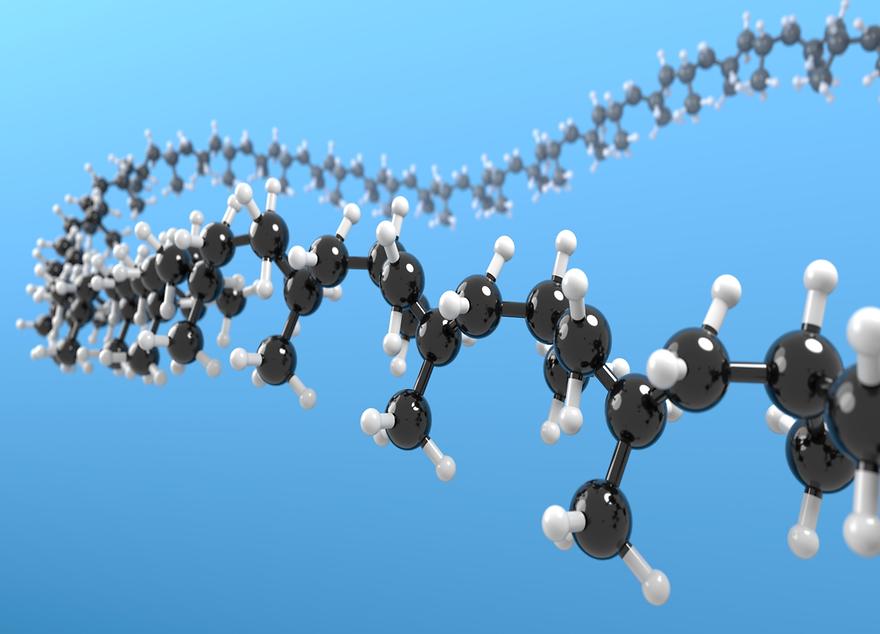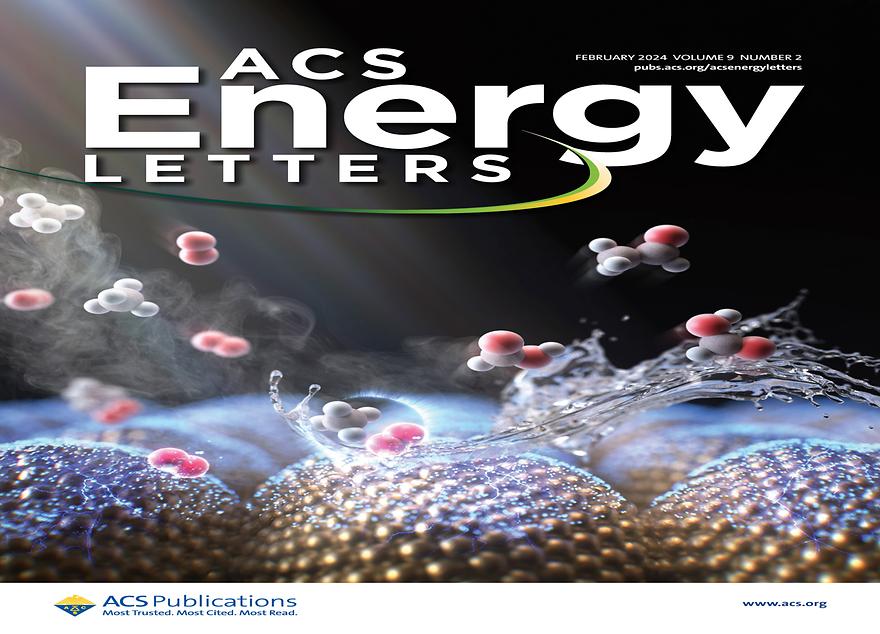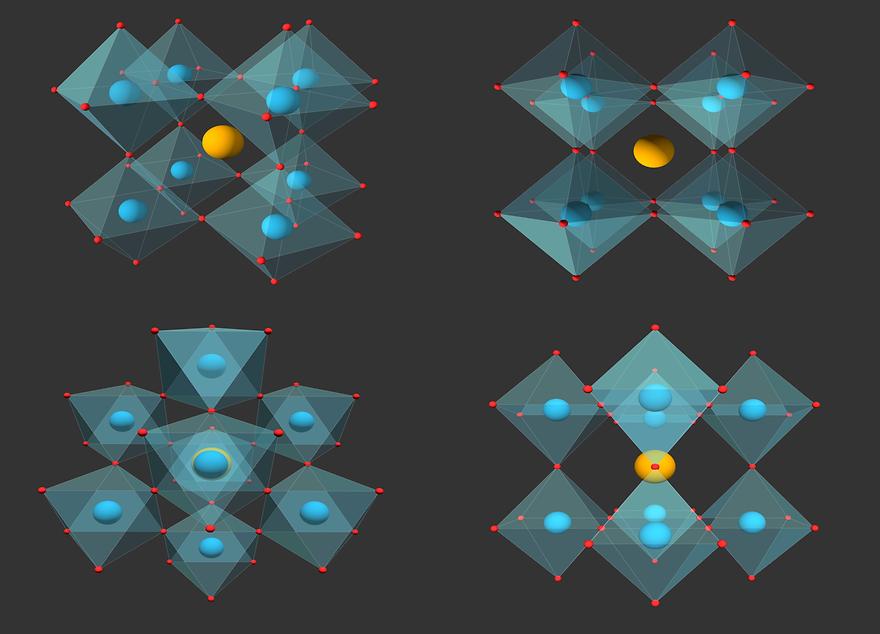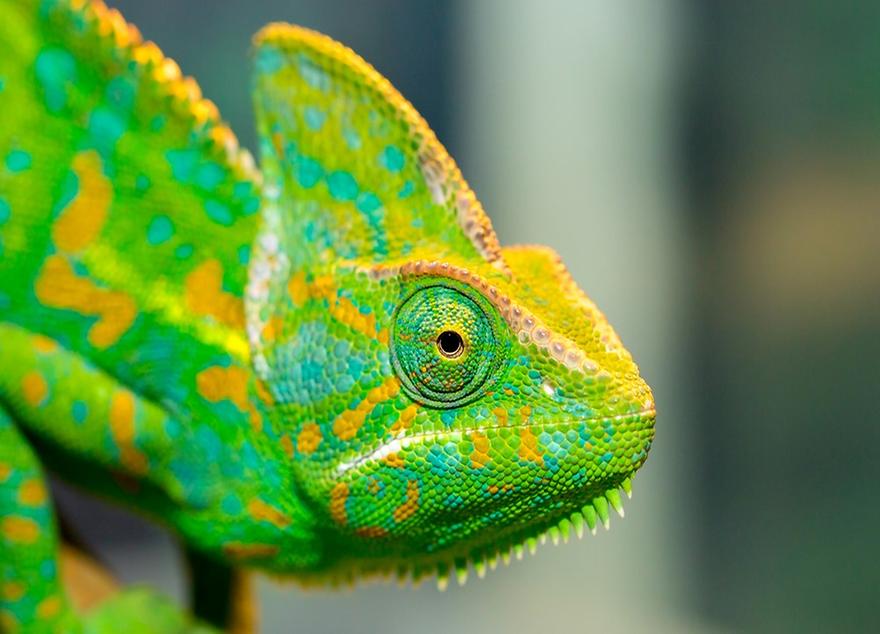-
Advancing towards carbon neutrality, researchers develop a highly efficient zinc-gallate catalyst for propylene oxide and carbon dioxide polymerizationZinc-based polymerization catalysts can help utilize carbon dioxide (CO2) as a carbon source for polymerization and production of sustainable plastics with various applications such as adhesives and feedstock for polyurethane. For advancing the production of eco-friendly CO2-derived polymers, a team of researchers demonstrated a simple method of synthesizing a highly effective and selective catalyst Zinc-gallate. The nanometer-scale layered structures of the catalyst showed high performance in propylene oxide and carbon dioxide polymerization. These findings herald a move towards a carbon neutral future. Scientists developed an innovative, highly active, and selective ultrathin zinc-gallate catalyst that can facilitate the copolymerization of propylene oxide and carbon dioxide into a high molecular weight polymer.Carbon dioxide (CO2) emissions from human activities are a major cause of climate change. Converting CO2 into useful products is a promising solution to help address this issue. One such strategy is utilizing CO2 for the polymerization of organic molecules to produce industrially useful products. In fact, significant efforts have been made for the development of effective catalysts for the development of such sustainable products from CO2.A popular choice of material for speeding up CO2-aided polymerization reactions is zinc-based catalysts. The most potent zinc-based heterogeneous catalyst with a very high activity reported to date is the zinc glutarate (ZnGA) catalyst, used for the production of alternating polycarbonate from propylene oxide (PO) and CO2. However, the catalytic activity of ZnGA is insufficient for its commercial use. This necessitates improvements in the catalytic activity of zinc-based catalysts for commercial applications. Now advancing research, a team of researchers from Ajou University, led by Professor Hye-Young Jang, addressed the existing catalytic limitations of ZnGA. In their study published in ACS Sustainable Chemistry & Engineering on February 26, 2024, they developed a new highly active and selective heterogeneous ultrathin zinc (Zn)-gallate for the copolymerization of PO and CO2 into high molecular weight polymer.“This research aims to develop highly efficient catalysts for CO2 polymerization to produce eco-friendly CO2-derived plastics. Replacing traditional fossil fuel-based plastics with these novel materials can significantly reduce both the consumption of fossil fuels and limit further CO2 emissions,” said Prof. Jang highlighting the motivation behind this study. The team used cost-effective zinc salts and gallic acid to synthesize a novel Zn-gallate catalyst and analyzed its morphology and catalytic mechanism. They attributed the nanometer-sized structures in the catalyst to its excellent catalytic activity, minimal monomer formation, and high carbonate linkage proportion. Comparative studies revealed that Zn-gallate outperformed many of its counterparts when catalyzing PO and CO2 polymerization. Talking about these findings, Prof. Jang says, “The catalyst developed in this study demonstrates exceptional catalytic activity and economic viability. We believe that our approach will help pave the pathway towards carbon neutrality by the year 2050.”In summary, the facile synthesis procedure and the reaction mechanisms reported in this study can significantly accelerate the development of high-performance Zn-based polymerization catalyst and their adoption in commercial applications.ReferenceAuthors:Yongmoon Yang1, Kihyuk Sung1, Jong Doo Lee2, Junho Ha1, Heeyoun Kim1, Jinsu Baek3, Jeong Hwa Seo4, Seung-Joo Kim4 Bun Yeoul Lee5 Seung Uk Son2, Byeong-Su Kim3, Yongsun Kim1, Ji-Yong Park1, and Hye-Young Jang1Title of original paper:Ultrathin Zn-Gallate Catalyst: A Remarkable Performer in CO2 and Propylene Oxide PolymerizationJournal:ACS Sustainable Chemistry & EngineeringDOI:10.1021/acssuschemeng.3c06058 Affiliations:1Department of Energy Systems Research, Ajou University, Korea2Department of Chemistry, Sungkyunkwan University, Korea3Department of Chemistry, Yonsei University, Korea4Department of Chemistry, Ajou University, Korea5Department of Molecular Science and Technology, Ajou University, Korea*Corresponding author’s email: hyjang2@ajou.ac.kr About Ajou UniversityFounded in 1973, Ajou University has quickly grown to become one of the top universities in the Republic of Korea. With over 15,000 students and 50 research centers in diverse fields, Ajou University partakes in the largest national research and graduate education project funded by the Korean Ministry of Education. In line with its recently reformed vision, Ajou University’s goal is to change society by connecting minds and carrying out high-impact research to improve the welfare of people in and outside Korea. Website: https://www.ajou.ac.kr/en/index.do About Professor Hye-Young Jang Dr. Hye-Young Jang is a Professor of Chemistry and Chair of the Department of Energy Systems Research at Ajou University. Before coming to Ajou University, she completed Postdoctoral training at MacMillan’s group (2021 Nobel Prize-winning group in Chemistry) at Caltech (2006). In 2005, Hye-Young Jang received her Doctor of Philosophy degree in Chemistry from The University of Texas at Austin under the supervision of Prof. Krische. Prof. Jang and her group are currently developing sustainable catalytic processes using renewable carbon resources such as CO2, plastic waste, and biomass.
-
60
- 작성자박윤정
- 작성일2024-09-23
- 7412
- 동영상동영상
-
Surface plasmon excitation of gold nanoparticle photocatalysts drives partial oxidation of methane to formic acid Aerobic oxidation of methane into oxygenated chemicals is an effective way for converting greenhouse gas into something beneficial. Researchers have now developed a new strategy for highly selective (>97%) production of formic acid from methane, driven by gold (Au) plasmonic nanoparticles as the photocatalyst. It utilized chemical potential by Au-generated charged carriers to drive the reaction in ambient conditions. Scientists demonstrated preferential production of the oxygenated liquid product, formic acid, by methane oxidation using plasmonic gold nanoparticles.Picture courtesy: ACS Energy Letters The increasing number of weather-related disasters, like unexpected heavy rains, droughts, and floods has reinforced the urgent need to mitigate global climate change. Converting greenhouse gases like methane (CH4) into energy-dense and transportable liquids can help reduce their impact on climate change and also lower the burden on the existing fossil fuels for essential chemicals. This will also contribute to a sustainable and resilient future for our future generations. Photochemical cells with metal plasmonic nanoparticles (NPs) are ideal systems for carrying out aerobic methane oxidation reactions for the production of economically viable chemicals like formic acid, methanol, and formaldehyde. The NPs absorb light through excitation of localized surface plasmon resonance to catalyze reactions without additional thermal or electric input. However, many plasmonic NP-catalyzed CH4 oxidation reactions suffer from the production of another greenhouse gas, carbon dioxide (CO2) as a by-product. To overcome this, Associate Professor Sungju Yu from Ajou University developed a new strategy for partial oxidation of CH4 that ensures selective production of formic acid suppressing CO2 production at room temperature. “We utilized a quantum mechanical approach to control the spin state of molecular oxygen and reduce the activation energy for methane conversion. This facilitates the formation of bonds between oxygen and methane at room temperature, without the need for any oxidants or harsh conditions,” said Associate Professor Yu, highlighting the significance of their approach. This study was published in the journal ACS Energy Letters on January 23, 2024.For this study, the team used surface plasmon excitation of Au NPs as the photocatalyst for partial oxidation. The interband transition of Au NPs produces charge carriers like electron (e-) and hole (h+), which interact with the oxygen molecules adsorbed on the surface to produce singlet oxygen (1O2). The 1O2 species significantly lowers the activation energy barrier, driving the highly selective (> 97 %) production of the oxygenated liquid product, HCOOH with a quantum yield of 0.16% while limiting CO2 production to 1%. “Our research has the potential to drive advancements in sustainable energy by converting methane into valuable liquid oxygenates more accessible. Further, diversifies our energy portfolio and reduces our dependence on fossil fuels. This leads to greater energy security, lower energy costs, and increased access to clean energy for humankind,” mentions Associate Professor Yu, while sharing the impact of the research study.ReferenceAuthors:Thuy Ha Nguyen, Eun Duck Park,* and Sungju Yu*Title of original paper:Plasmon-Driven Selective Methane Oxidation to Formic Acid at Ambient ConditionsJournal:ACS Energy LettersDOI:10.1021/acsenergylett.3c02493Affiliations:Department of Chemistry and Department of Energy Systems Research, Ajou University, Republic of Korea*Corresponding author’s email: sungjuyu@ajou.ac.kr About Ajou UniversityFounded in 1973, Ajou University has quickly grown to become one of the top universities in the Republic of Korea. With over 15,000 students and 50 research centers in diverse fields, Ajou University partakes in the largest national research and graduate education project funded by the Korean Ministry of Education. In line with its recently reformed vision, Ajou University’s goal is to change society by connecting minds and carrying out high-impact research to improve the welfare of people in and outside Korea. Website: https://www.ajou.ac.kr/en/index.do About Associate Professor Sungju YuSungju Yu is an Associate Professor of Chemistry and Energy Systems Research at Ajou University. Before joining Ajou University, he completed postdoctoral research at the University of Illinois at Urbana-Champaign. He earned his Doctor of Philosophy degree in Chemical Engineering from Seoul National University in the year 2016. His research group focuses on exploring energy-matter interactions at the nanoscale and developing approaches for energy and environmental challenges, including carbon utilization and hydrogen energy.
-
58
- 작성자박윤정
- 작성일2024-09-09
- 7574
- 동영상동영상
-
Similar to the way spiders detect vibrations, a new biosensor can detect a range of biosignals, from pulse to breathing ratesWearable sensors are becoming increasingly popular for biomedical applications such as health monitoring. Drawing inspiration from how spiders detect vibrations, researchers from Ajou University in South Korea have developed a sensor that can respond to a wide range of pressures. The sensor is a promising step toward the development of highly sensitive wearable health monitoring devices, allowing the detection of breathing patterns, muscle contractions, and pulse rate fluctuations. Caption: The TUNES sensor detects pressure by mimicking how spiders detect vibrations, allowing for the detection of a wide range of biosignals. The sensor finds use as a highly sensitive wearable sensor for monitoring pulse rates, muscle contractions, and respiration.Picture courtesy: ShutterstockFrom the aircraft wings that were modeled after birds by the Wright brothers, to Japan’s famous bullet train that was inspired by the shape of a kingfisher's beak, mimicking the natural world has often led to breakthroughs that have improved people’s lives drastically.Now, in a study published in npj Flexible Electronics, Associate Professor Daeshik Kang and his research team from Ajou University, South Korea, have added another engineering feat to the list. The team has developed Tunable, Ultrasensitive, Nature-inspired, Epidermal Sensor (TUNES), a biosensing technology that mimics the way spiders detect vibrations. “Flexible devices can sensitively measure physical stimuli such as strain, pressure, and vibrations. However, there is a tradeoff between the sensor's measurement range and sensitivity, requiring different sensors depending on the target signal,” remarks Dr. Kang.Spiders have mechanosensory slit organs present in their legs, used to perceive movements in their environment. These slits contain nerve endings that are activated by vibrations. The unique feature of the slit organs is enabling the spider to adjust the sensitivity by changing the leg position. To detect prey, spiders stretch their legs, opening these slits to enhance sensitivity to smaller vibrations. However, to avoid predators, they bend their legs, compressing or closing the slits in order to only detect large forces.To replicate this, the research team fabricated nanoscale cracks on a metallized polyimide film, mimicking the slits on the spider’s legs. Just the way spiders bend their legs to adjust slit openings, when bent by an external force, the sheet also undergoes changes in the opening of the cracks. This results in a modification to the film's electrical resistance, enabling the detection of a wide range of pressures, from 0.05 Pa–25 kPa.“The TUNES' ability to adjust sensitivity through preset strain overcomes the traditional tradeoff between measurement range and sensitivity,” says Dr. Kang.The sensor’s broad sensitivity to strains makes it extremely versatile in detecting small as well as large mechanical biosignals. For instance, when attached to the ribcage, the sensor responds to the changing volume of the chest cavity during breathing, to monitor respiration. Inspired by this, the research team used the sensor to detect muscle contractions and subtle changes in the pulse rate. They even applied machine learning to the pulse rate data, to automatically identify and diagnose health conditions.These capabilities, explains Dr. Kang, make the sensor highly suitable as a wearable health monitoring system for blood pressure, heart rate, and even age-specific diagnosis. He elaborates, “We anticipate the ability to provide users with the convenience of instantly assessing their health status by measuring various physiological signals using only one sensor system at an affordable cost.”Providing users with the convenience and affordability of instantly assessing their health status by measuring various physiological signals using only one sensor is what drove the team to conduct this research. The highly sensitive sensor allows for non-invasive blood pressure measurements on the wrist, which opens avenues for non-invasive blood pressure monitoring, thus reducing unnecessary surgical risks. What’s more, TUNES has already shown success for non-invasive pressure measurement in clinical trials, proving its practicality, versatility, and effectiveness.We are confident that the team’s efforts will take this valuable biosensor to the masses, sooner rather than later!ReferenceAuthors:Taewi Kim 1, Insic Hong 1, Yeonwook Roh 1, Dongjin Kim1, Sungwook Kim2, Sunghoon Im1, Changhwan Kim 1, Kiwon Jang1, Seongyeon Kim1, Minho Kim1, Jieun Park1, Dohyeon Gong1, Kihyeon Ahn1, Jingoo Lee1, Gunhee Lee3, Hak-Seung Lee4, Jeehoon Kang4, Ji Man Hong5, Seungchul Lee2, Sungchul Seo6, Bon-Kwon Koo 4,7*, Je-sung Koh1*, Seungyong Han 1*, and Daeshik Kang 1*Title of original paper:Spider-inspired tunable mechanosensor for biomedical applicationsJournal:npj Flexible Electronics DOI:10.1038/s41528-023-00247-2 Affiliations:1 Department of Mechanical Engineering, Ajou University, Korea2 Department of Mechanical Engineering, Pohang University of Science and Technology, Korea3 Department of Sustainable Environment Research, Korea Institute of Machinery & Materials, Korea4 Department of Internal Medicine and Cardiovascular Center, SeoulNational University Hospital, Korea5 Department of Neurology and Neurosurgery, Ajou University School of Medicine, Korea6 Department of Nano-chemical, Biological and Environmental Engineering, Seokyeong University, Korea7 Institute on Aging, Seoul National University, Korea*Corresponding authors’ email ids: Daeshik Kang (dskang@ajou.ac.kr); Bon-Kwon Koo (bkkoo@snu.ac.kr); Je-sung Koh (jskoh@ajou.ac.kr); Seungyong Han (sy84han@ajou.ac.kr)About Ajou UniversityFounded in 1973, Ajou University has quickly grown to become one of the top universities in the Republic of Korea. With over 15,000 students and 50 research centers in diverse fields, Ajou University partakes in the largest national research and graduate education project funded by the Korean Ministry of Education. In line with its recently reformed vision, Ajou University’s goal is to change society by connecting minds and carrying out high-impact research to improve the welfare of people in and outside Korea.Website: https://www.ajou.ac.kr/en/index.doAbout Dr. Daeshik Kang from Ajou UniversityDr. Daeshik Kang is an Associate Professor at the Multiscale Bio-inspired Technology (MOST) Lab, Mechanical Engineering Department, Ajou University, South Korea. He received his Ph.D. in Mechanical Engineering from Seoul National University in 2014. After earning his doctorate, he worked as a postdoctoral researcher at the University of Illinois at Urbana-Champaign until 2016. His current research interests include robotics, artificial intelligence-based reinforcement learning, and biomedical applications. He has authored around 60 research papers, which have received close to 5,000 citations.
-
56
- 작성자오동우
- 작성일2023-12-14
- 12092
- 동영상동영상
-
Researchers develop a new machine learning algorithm to aid the discovery of new inorganic halide perovskites and their derivatives.A new machine learning-based material discovery algorithm developed by researchers from South Korea explores optical and electrically active inorganic halide perovskite systems and their derivatives, enabling the identification of 153 previously unknown materials. The team has also designed a new metal halide, namely Cs3LuCl6, for white light emission applications. A new machine learning-based algorithm combines basic theoretical concepts with AI technology to detect over 150 new stable compositions of inorganic halide perovskites, including Cs3LuCl6, for white light emission. Picture courtesy: Niethammer Zoltan from Shutterstock.Halide perovskites are photosensitive materials which have taken the world of lasers, light-emitting diodes (LEDs), and solar cells by storm, owing to their excellent optoelectronic properties. Despite their popularity, most organic-inorganic hybrid perovskites suffer from a lack of stability when exposed to environmental factors, such as heat and oxygen. Studies have shown that all-inorganic halide perovskites could be a more resistant-to-degradation alternative to the conventional options. However, the physical and chemical properties of all-inorganic perovskites remain a mystery due to their complex structural features. To overcome this hurdle, a team of researchers led by Assistant Professor Sung Beom Cho from Ajou University in Korea recently combined machine learning with density functional theory (DFT) calculations to computationally screen new inorganic metal halides (especially ones with perovskite structure) and their derivatives. In their study published in ACS Energy Letters on 2 August 2023, they presented a simple AI-powered strategy for investigating structures and properties of metal halides and the synthesis technique for a new perovskite material for white LED applications. “We took case studies of known metal halide systems and merged them with fundamental undergraduate-level theories and the latest in AI technology to transform theoretical concepts into tangible materials,” says Dr. Cho, highlighting the simple yet ingenuine design of the new computational exploration technique. The new workflow enabled exploration of 108 metal halide systems and predicted over 1,700 possible material structures, ranging from 0D to 3D. The team also analyzed the electrical properties and thermal stabilities of possible perovskite structures and mapped the chemical spaces by listing stable compositions on a periodic table. This led to the identification of 153 previously unknown materials. The researchers demonstrated the robustness of their computational analysis by synthesizing Cs3LuCl6, one of the metal halides predicted by the machine learning model. They also tested its optoelectrical properties by using it in white LEDs. Apart from its immediate applications as a tool for discovering newer metal halides with advanced photophysical properties, this work also presents a highly versatile methodology that can revolutionize material discovery and reshape industries dependent on high-performance materials in the long run. “It's a framework that can be extended to virtually any material system, opening a gateway to accelerated discovery in fields crucial to cutting-edge industries like electronics and energy,” concludes Dr. Cho. ReferenceAuthors:Hyeon Woo Kim1,2, Joo Hyeong Han1, Hyunseok Ko2, Tuhin Samanta2, Dong Geon Lee1,2, Dong Won Jeon3,4, Woongchan Kim3,4, Yong-Chae Chung1, Won Bin Im1,*, and Sung Beom Cho3,4,*Title of original paper:High-Throughput Screening on Halide Perovskite Derivatives and Rational Design of Cs3LuCl6Journal:ACS Energy LettersDOI:10.1021/acsenergylett.3c01207 Affiliations:1 Division of Materials Science and Engineering, Hanyang University2 Center of Materials Digitalization, Korea Institute of Ceramic Engineering and Technology (KICET)3 Department of Materials Science and Engineering, Ajou University4 Department of Energy Systems Research, Ajou University*Corresponding authors’ emails: imwonbin@hanyang.ac.kr (Won Bin Im) and csb@ajou.ac.kr (Sung Beom Cho)About Ajou UniversityFounded in 1973, Ajou University has quickly grown to become one of the top universities in the Republic of Korea. With over 15,000 students and 50 research centers in diverse fields, Ajou University partakes in the largest national research and graduate education project funded by the Korean Ministry of Education. In line with its recently reformed vision, Ajou University’s goal is to change society by connecting minds and carrying out high-impact research to improve the welfare of people in and outside Korea. Website: https://www.ajou.ac.kr/en/index.do About the authorDr. Sung Beom Cho has been an Assistant Professor in the Department of Materials Science and Engineering at Ajou University since 2022. He got his Ph.D. in Materials Science and Engineering and dual B.S. degrees in Materials Science Engineering and Physics from Hanyang University. Before joining Ajou University, Dr. Cho was a Senior Researcher at the Korea Institute of Ceramic Engineering and Technology and a Postdoctoral Associate at Washington University in St. Louis. He specializes in multiscale and multiphysics modeling of materials, with a foundation in solid-state physics and thermodynamics. His expertise extends from fundamental research to industrial applications, from semiconductors to batteries.
-
54
- 작성자오동우
- 작성일2023-12-13
- 9398
- 동영상동영상
-
Researchers develop bio-inspired capillary-controlled robotic fins for creating displays that consume a fraction of the power used by traditional displaysMorphing appendages allow natural creatures to change their skin color. However, achieving such functionality using traditional light-emitting diodes for soft robots is quite energy-expensive. Now, drawing inspiration from nature, researchers have developed innovative capillary-controlled robotic flapping fins which can be used to fabricate multipixel, ultralow power displays, paving the way for a sustainable future. Creatures like chameleons use morphing appendages to change color. Inspired by this phenomenon, innovative flap-phores can be used to develop multipixel displays that consume thousand times less power than traditional light-emitting diodes.Many creatures in nature are known to have fascinating morphing skins with switchable functions. Chameleons, for instance, masterfully camouflage themselves using pixelated skin appendages. These morphing appendages offer them several advantages, including the ability to change color, temperature, texture, and adhesion properties for camouflage or temperature regulation. Translating these capabilities via soft robotics to curvilinear and soft machines using traditional light-emitting diodes requires considerably higher amount of energy, besides making these devices bulky. Natural creatures, on the other hand, use the flow of liquids to control these appendages, requiring them to expend only a small amount of power. Now, however, drawing inspiration from the capillary bundling of the hair of otters and beetles, an international team of researchers led by Assistant Professor Jonghyun Ha from the Department of Mechanical Engineering at Ajou University, Korea, has developed innovative ultralow power capillary-controlled robotic flapping fins, named “flap4.” Elaborating on the inspiration behind this study, Dr. Ha says, “I was studying how surface tension can deform flexible structures when I had a simple yet intriguing thought. I wondered that if we look at these structures from above, they can be used to change texture or color.” This study was published in Volume 9, Issue 26 of the journal Science Advances on June 30, 2023.The flap4 cells created by the team operate on the principle of capillarity, where a liquid rises or falls in very narrow passages, called capillaries, due to surface tension. The mechanism behind this is similar to that of a sponge with several narrow pores acting as capillaries, allowing it to absorb a large amount of water. Flap4 cells consist of ultrasoft fins fixed to the base of wet cells, which have pores connected to a liquid control system. By controlling the flow rate of the liquid through the pores, capillary action can be used to bend the fin to either narrow or wide side. This innovation allowed the team to develop a soft multipixel display by using each flap4 cell as an individual pixel. Moreover, they also developed an infrared signaling system by using liquids of different temperatures in the flap4 cells. Stressing the importance of this development, Dr. Ha says, “This innovative technology can enable the development of displays that consume 1000-fold less energy than traditional light-emitting diodes for a variety of applications. They can be used to add critical functionalities to soft robots through dynamic skins and even for big signage displays, with substantial power savings.” In summary, this study not only serves as a leap forward in soft robotics but also as an environment-friendly alternative to traditional display technologies. With significantly less energy consumption and reduced electronic waste generation, it paves the way for a sustainable future where technology advancements adapt to the needs of the people and the planet!ReferenceAuthors:Jonghyun Ha1,2, Yun Seong Kim1,3, Chengzhang Li1, Jonghyun Hwang1, Sze Chai Leung1, Ryan Siu1, and Sameh Tawfick1,3,*Title of original paper:Polymorphic display and texture integrated systems controlled by capillarityJournal:Science AdvancesDOI:10.1126/sciadv.adh1321 Affiliations:1Department of Mechanical Science and Engineering, University of Illinois2Department of Mechanical Engineering, Ajou University3The Beckman Institute for Advanced Science and Technology, University of Illinois*Corresponding author’s email: tawfick@illinois.eduAbout Ajou UniversityFounded in 1973, Ajou University has quickly grown to become one of the top universities in the Republic of Korea. With over 15,000 students and 50 research centers in diverse fields, Ajou University partakes in the largest national research and graduate education project funded by the Korean Ministry of Education. In line with its recently reformed vision, Ajou University’s goal is to change society by connecting minds and carrying out high-impact research to improve the welfare of people in and outside Korea. Website: https://www.ajou.ac.kr/en/index.do About the authorJonghyun Ha is currently an Assistant Professor at Ajou University. He earned his B.S. from Chungnam National University in 2012 and Ph.D. from Seoul National University in 2018. He was a postdoc at the University of Illinois at Urbana-Champaign until 2021, after which he joined the Samsung Advanced Institute of Technology. By 2022, he transitioned to his current role at Ajou University. His research interests include microfluidics, porous flows, and microscale fluid-solid interactions. He can be reached by email at: hajh@ajou.ac.kr
-
52
- 작성자오동우
- 작성일2023-12-05
- 8208
- 동영상동영상





